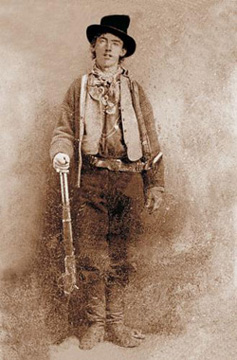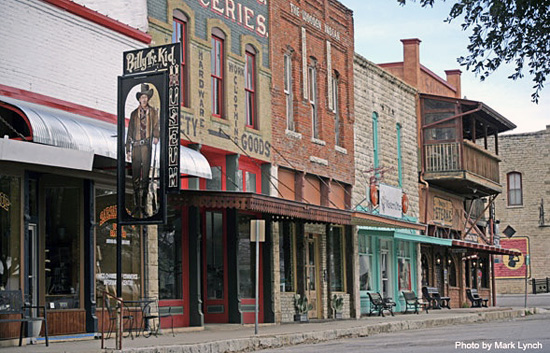The Legend of Billy the Kid
 The legend of Billy the Kid has a fork about midway through the story. Either Pat Garrett shot an unarmed Billy the Kid in the back to collect the $500 reward or Pat Garrett shot some other unarmed guy in the back and lied about it being Billy the Kid in order to collect the $500 reward.
The legend of Billy the Kid has a fork about midway through the story. Either Pat Garrett shot an unarmed Billy the Kid in the back to collect the $500 reward or Pat Garrett shot some other unarmed guy in the back and lied about it being Billy the Kid in order to collect the $500 reward.
In the end, the story is inconclusive with regards to the fate of Billy the Kid, but one thing is clear: Pat Garrett was an asshole.
Should you, after careful consideration of the evidence available for both possible stories, decide that you believe the former, then head to Fort Sumner, New Mexico. If you decide it’s the latter, then you need to see the Billy the Kid Museum in Hico, Texas.
Alternately you could do what I did — just sort of stumble into Hico, Texas looking for something to do while your sore ass recovered from five hours in a 1969 Ford pickup that no longer has even the slightest hint of padding left in the seat cushions. The obvious time killer in Hico, should you take this approach, is the Billy the Kid Museum.
The museum in Hico is a testament to the survival of Billy the Kid, who, in this telling, later emerges as a man calling himself Ollie L. “Brushy Bill” Roberts. This scenario is particularly appealing to people who believe in redemption and the idea that, at heart, Billy the Kid was not a bad man, did not deserve to be gunned down for a reward (class act that Pat Garrett) and turned his life around.
For those more fond of doomsday, judgments and reaping what you sow, there is the New Mexico museum, which holds that Billy the Kid is buried there, at the Fort Sumner cemetery, dead and done at age twenty-one.

After half an hour or so at the Billy the Kid Museum in Hico, most of which of watching an old episode of Unsolved Mysteries which plays in the back room on a continuous loop, I decided that there is great evidence for both stories and, moreover, it really doesn’t matter what happened to Billy the Kid.
Whoever and whatever Billy the Kid was and did, he has long since passed into legend. History does not catch every story that is slowly slipping through its cracks, some things get caught up in the floorboards and become legends.
Unlike novels, the stories and legends that never quite make it to anything as definitive as history don’t always have neat endings. In fact, the messier, more confusing and more controversial the ending is the more of a legend it becomes. The legend of Billy the Kid is like that of Amelia Earhart or D.B. Cooper — the less we know for sure, the more compelling the story becomes.
That the events actually took place in one particular way or another is largely incidental to anyone who is not Billy the Kid, and, one thing we know for sure, like me, you are not.
Eventually the Unsolved Mysteries tape came back around to the spot where I started watching. I got up and looked at the antique Winchester rifle and old Colt revolvers sitting under glass in the display case. Behind them was a tattered Civil War uniform draped over a wooden chair so old it was gray and looked like the slightest breeze would send it to splinters.
Along the opposite wall were a series of laminated broadsides telling the less controversial part of Billy the Kid’s story in an antique font the purveyors of the museum no doubt believed would give it a more authentic look.
There wasn’t much else in the room, a few other old west artifacts, an American flag, a Texas flag. I wandered back out the front room and chatted for a minute with the woman behind the counter. She was worried about the thunderstorms in Dallas. Whatever hits them ends up here eventually, she said. I agreed, though I have no idea if she was right. It was a good story anyway.
[The photo of Billy the Kid is from Wikipedia. The Museum photo is copyright Mark Lynch, (via the Billy the Kid Museum), used under the Fair Use provision of U.S. copyright law]
Thoughts?
Please leave a reply:
All comments are moderated, so you won’t see it right away. And please remember Kurt Vonnegut's rule: “god damn it, you’ve got to be kind.” You can use Markdown or HTML to format your comments. The allowed tags are
<b>, <i>, <em>, <strong>, <a>. To create a new paragraph hit return twice.